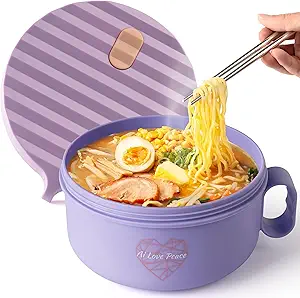Ramen is a beloved Japanese noodle soup featuring flavorful broth, wheat noodles, and savory toppings like pork and eggs. What makes ramen so popular worldwide?
Where Did Ramen Originate?
Ramen actually originated in China and was introduced to Japan in the late 19th or early 20th century. The dish was adapted by the Japanese and over time, it became deeply rooted in Japanese cuisine. Today, Japan is considered the home of authentic ramen, where it has evolved into various regional styles such as Tokyo-style, Sapporo-style, and Hakata ramen.
Where Can You Find Ramen?
Ramen can be found in nearly every major city in the world. In Japan, ramen shops (called ramen-ya) are everywhere, from high-end specialty restaurants to small corner stalls. Outside Japan, ramen is served in Japanese restaurants, food courts, and even fast food chains. In supermarkets, instant ramen is widely available in both cup and packet forms, offering quick and easy meals for people of all ages.
Which Countries Eat Ramen the Most?
Japan tops the list as the country where ramen is most commonly consumed. South Korea and China also have high ramen consumption, especially instant ramen. The United States, Thailand, and the Philippines have growing ramen cultures due to popular ramen restaurants and a demand for Asian cuisine.
What Is Ramen Made Of?
Ramen noodles are typically made from wheat flour, salt, water, and a key ingredient called kansui—an alkaline mineral water that gives ramen noodles their distinct chewiness and yellow color. The broth varies depending on the style, but common bases include pork bones (tonkotsu), soy sauce (shoyu), miso, or salt (shio). Toppings may include meats, eggs, vegetables, and seaweed.
Popular Ramen Brands in Supermarkets
Here are some popular ramen brands widely available in supermarkets:
-
Nissin (Cup Noodles, Top Ramen)
-
Maruchan
-
Samyang (famous for spicy Korean ramen)
-
Shin Ramyun (by Nongshim)
-
Ichiran Ramen (premium Japanese brand)
-
Indomie (Indonesian ramen, often instant-style)
-
Mama (popular Thai instant noodles)
A Simple and Delicious Ramen Recipe
Homemade Chicken Ramen (Serves 2)
Ingredients:
-
2 packs of instant ramen noodles (discard the flavor packet)
-
4 cups chicken broth
-
1 tbsp soy sauce
-
1 tsp sesame oil
-
1 garlic clove, minced
-
1 boiled egg, halved
-
1 cup cooked chicken breast, shredded
-
1/2 cup corn kernels
-
1/2 cup sliced mushrooms
-
Green onions and nori (seaweed), for garnish
Instructions:
-
In a pot, heat sesame oil and sauté garlic until fragrant.
-
Pour in the chicken broth and bring to a boil.
-
Add soy sauce and mushrooms, simmer for 5 minutes.
-
Add noodles and cook for 3–4 minutes until tender.
-
Serve in bowls with chicken, corn, boiled egg, green onions, and nori.
Who Can and Cannot Eat Ramen?
Can Eat: Most people can enjoy ramen in moderation. It’s a good source of carbohydrates and can be balanced with protein and vegetables.
Should Avoid or Limit:
-
People with hypertension: Instant ramen often contains high sodium levels.
-
People with gluten intolerance: Ramen noodles are made from wheat.
-
Vegans/vegetarians: Many ramen broths contain meat or animal-based ingredients, so check the label or opt for plant-based ramen.
Nutritional Content: Vitamins and Minerals in Ramen
Ramen provides energy through carbs and may contain small amounts of:
-
Iron
-
Magnesium
-
B vitamins (especially B1, B2, and niacin)
-
Protein (from meat toppings or eggs)
However, instant ramen often lacks fiber, essential vitamins, and may contain preservatives and high sodium.
Tips and Suggestions About Ramen
-
Add fresh toppings like spinach, boiled eggs, tofu, or grilled chicken to make ramen healthier.
-
Choose low-sodium or organic ramen if available.
-
Make your own broth to control flavor and ingredients.
-
Try different styles: Shoyu (soy), Miso, Tonkotsu (pork), and Shio (salt) for variety.
Ramen is more than just a quick meal — it’s a cultural experience and a comfort food loved across the globe. Whether you enjoy a bowl at a local Japanese restaurant or cook your own version at home, ramen offers warmth, flavor, and satisfaction in every slurp.

